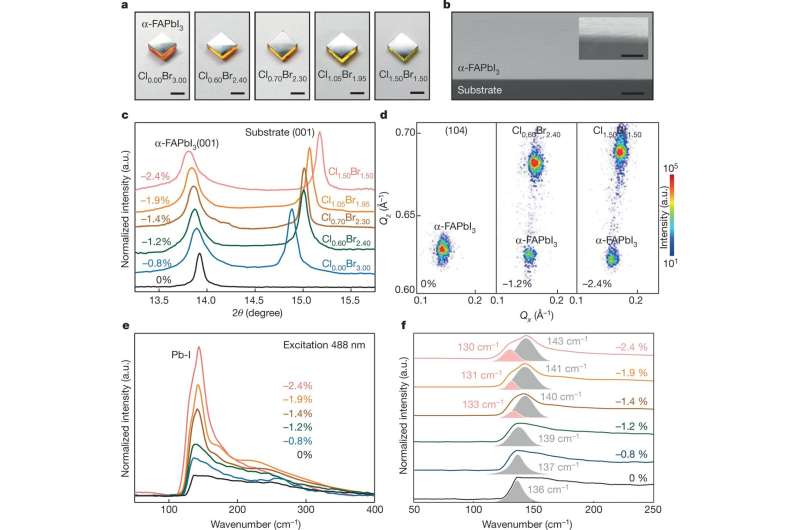January 9, 2020 report
A way to increase structural stability in strained halide perovskites

A team of researchers from the U.S., Saudi Arabia and Australia has structurally stabilized halide perovskites when under strain. In their paper published in the journal Nature, the group describes their approach and their hopes that their work will lead to more efficient photovoltaics.
It was found back in 2009 that halide perovskites could convert sunlight into electricity—a finding that set off hopes of more efficient solar cells. Unfortunately, problems with tuning the crystals prevented their use in viable products. In this new effort, the researchers report that they have found a way to tune halide perovskites in a way that might make their application in solar cells more likely.
The problem with halide perovskites is their tendency to form into hexagonal structures that are incapable of responding to the light in solar radiation. To get around this problem, researchers have been trying to stress them to change their structure. Doing so would add strain to the crystal, which could alter the mobility of a charge carrier. With halide perovskites, that induced strain results in structural instability, which has led to unreliability—a factor that prevented them from commercial applications. The approach by the researchers working on this new effort involved improving the structural stability of such crystals under strain.
The team grew a halide perovskite known as α-FAPbI3 on another (more stable) halide perovskite substrate in a way that resulted in a cubic structure in the substrate and a pseudo-cubic structure on the top crystal. Doing so locked the α-FAPbI3 into the pseudo-cubic structure, preventing it from reverting into an undesirable structural shape—making it more stable.
The researchers report that the squeezing that induced strain in the α-FAPbI3 sample increased the mobility of the positively charged holes, making it useful as a photovoltaic material. They acknowledge, however, that it is still unclear if the approach could be commercialized. More work is required to see if the crystals can be grown in such fashion with the precision needed to make super-lattices.
More information: Yimu Chen et al. Strain engineering and epitaxial stabilization of halide perovskites, Nature (2020). DOI: 10.1038/s41586-019-1868-x
Journal information: Nature
© 2020 Science X Network


















